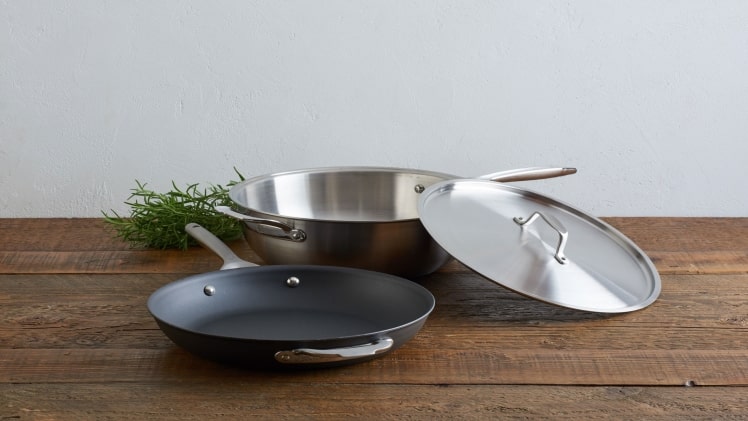A pan has acquired its deserved position among the most important cookware in the Olympus of kitchenware. Despite popular belief, it is adaptable and, in general, exceptional: They are present in every kitchen, and they are also required in every household kitchen.
A saucepan could be made of a variety of materials, including steel material, cast iron, aluminium, Teflon, among others. However, the premise will be the same: it is designed to handle a wide range of fluids.
Shapes & Styles
The form of a pan is distinguishable: It’s wide, with bevelled edges and sharp lines, and it generally has a long pole and, more often than not, a lid. Its surface energy is often tiny in comparison to its thickness, enabling heat to be spread uniformly throughout the fluid in the pan.
A pan is typically intended for use on the cooktop. This could come in all sorts of dimensions, but the most common are 2-3 quart pans. It is shorter than a stockpot and dutch oven, although much bigger and typically narrower in comparison to a frying pan. In addition, it has a higher elevation and is thinner than a sautépan.
The elevation of a pan is among the primary selling advantages since it permits a large amount of fluid to be held in it.
Furthermore, the higher height avoids liquid leakage, which is common in other pans. For instance, the heating process in a pan would be untidy and perhaps hazardous, specifically if you meant to transfer it. A pan, on the other hand, eliminates these issues because of its form.
A pan is ideal for heating water.
A pan is perfect for making anything with high liquid content. This makes it ideal for simmering, bubbling, creating soups, and, predictably, preparing sauces such as bolognese sauce. They’re not excellent for cooking soups or large amounts of items like a beef stew as they are generally in the 2-3 quarts level; the wider stockpot is better for it, though. On the other hand, a saucepan is ideal for producing lesser portions.
Water temperature for a tiny portion of pasta is a critical criterion that is frequently assigned to pans. It also is a terrific alternative for boiled potatoes, polenta, legumes, and any other meal that has to be boiled.
In haste, an oven-safe pan could also be used to saute. A pan may also be used as a little Dutch oven if it has a lid. A nonstick-coated pot, on the other hand, must not be kept in an oven whatsoever.
Since a pan is frequently exposed to intense heat, you’ll need one that could withstand it.
Furthermore, as pans are frequently used to prepare acidic items such as sauce or stew, you’ll like a non-reactive alloy. As a result, stainless seems to be the go-to option: Stainless steel will withstand extremely high temperatures and therefore is non-reactive. Stainless steel is an excellent choice for non-toxic, convenient, and sturdy cookware that is suitable for simmering, sautéing, and frying. It holds heat effectively and heats meals uniformly, making it ideal for small-batch cooking.
This fulfills most of those requirements. Furthermore, as stainless steel comes with easy cleaning, you will be able to manage through several loads without destroying the pan.
It will be among your greatest culinary gadgets, allowing you to produce a variety of delicious delicacies ranging from caramel to core. When selecting a saucepan, look for something substantial that could also withstand repeated use — and be sure to care for it properly.

